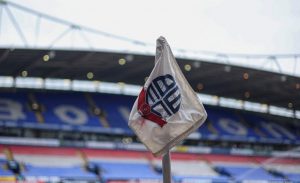More questions than answers as United look to kick on

Somewhere, in the corridors of Old Trafford, there are two offices with different problems of their own.
In one, manager Eric ten Hag is juggling a revamp of his playing squad,with the ‘for sale’ sign slapped on most at the close of the previous season, having been handed a three-year extension to his contract until June 2026, no doubt helped by the Red Devils’ FA Cup final triumph over neighbours, and Premier League Champions Manchester City in May.
And in another, co-owner, Sir Jim Ratcliffe, is wrestling with an overhaul of the footballing behemoth in a bid to compete at the top table of English and European football – which involves the axing of 250 jobs as a starter.
On acquiring a 27.7% stake in the club for £1.3bn in February this year, the boyhood United fan declared he would add player recruitment to his already bulging in-tray of ‘things to do’ at the iconic institution of the English game.
Probably foremost, though, is the issue of expanding the current stadium, which could be through a redevelopment of the 114-year old ground, or the creation of a new facility altogether.
He speaks of his ambition to create a ‘Wembley of the North’ and angered some quarters by suggesting the Government could contribute to the cost.
Billionaire Ratcliffe isn’t short of a few bob. In May this year the owner of the INEOS chemical group was declared the North West’s richest person, with a £23.519bn fortune, so ridicule was heaped from on high.
He has assembled a joint task force to explore the options, comprising Lord Sebastian Coe, Manchester Metro Mayor Andy Burnham, former player Gary Neville, and Sara Todd, Trafford Council’s CEO.

Sir Jim Ratcliffe
Ratcliffe’s aim is to increase ground capacity from the current 74,310, to 100,000, to future-proof anticipated demand.
When the club published its annual accounts last October, it revealed there were more than 150,000 supporters on its season ticket waiting list.
Failsworth-born Sir Jim’s personal preference is believed to be for an entirely new ground, rather than a redevelopment, which would take longer and cut seating capacity as each stand was reconfigured.
A new ground would also enable the club to continue playing at Old Trafford while construction took place on a neighbouring site that the club already owns, which is estimated would take six years to complete.
Current thinking is for Old Trafford to be retained and ‘downsized’ into the new home of United’s women’s team.
But there is a clear disparity in costs.
Redevelopment of Old Trafford is estimated at £1bn, compared with £2bn for a new stadium, although this will, inevitably, rise. When Everton’s plans to build their new waterfront stadium were approved by the city council in February, 2021, the cost was estimated at £505m. That has since jumped to £760m and is likely to increase further before scheduled completion this December.
Funding options for United range from Ratcliffe dipping into his own pocket, selling naming rights for sponsorship, or borrowing, which would raise concerns among fans’ groups who have been critical of the constant debt pile carried by the club since its acquisition, via a leveraged buyout, by the Glazer family in 2005.
It is reported that Ratcliffe has demanded a full recommendation from the task force by the end of this year, suggesting big financial decisions will soon follow.
Ratcliffe has proved he is not averse to opening the purse strings, with a £50m redevelopment of the club’s Carrington training ground already under way since his arrival.
Last month, announcing third quarter results, United reduced its forecasts for its current financial year to expected revenues of £660m, compared with previous guidance of up to £665m, and adjusted EBITDA of £140m, against a predicted £150m previously.
However, the 2024 annual figures are still expected to set a new record.
This would build on 2023 which was, in itself, a record year, when United bounced back from the pandemic restrictions to generate revenues of £648.4m, with adjusted EBITDA of £154.9m, up from £81.1m in 2022.
The net loss was slashed from £115.5m to £28.7m.
Even allowing for the post-pandemic surge, the club’s appeal was reflected in its ticket sales which surpassed the record set in 2016/17, totalling a cumulative 2.4 million tickets sold.
Season ticket and Executive Club tickets for the 2023-24 season also sold out in record time, with the lowest ever churn, including a record number of women’s team season tickets.
In fact, matchday revenues for the women’s game in the 2022/23 season was nearly three times the 2021/22 season.
Perhaps Sir Jim’s hankering for a new 100,000-capacity stadium is ever more prescient?








